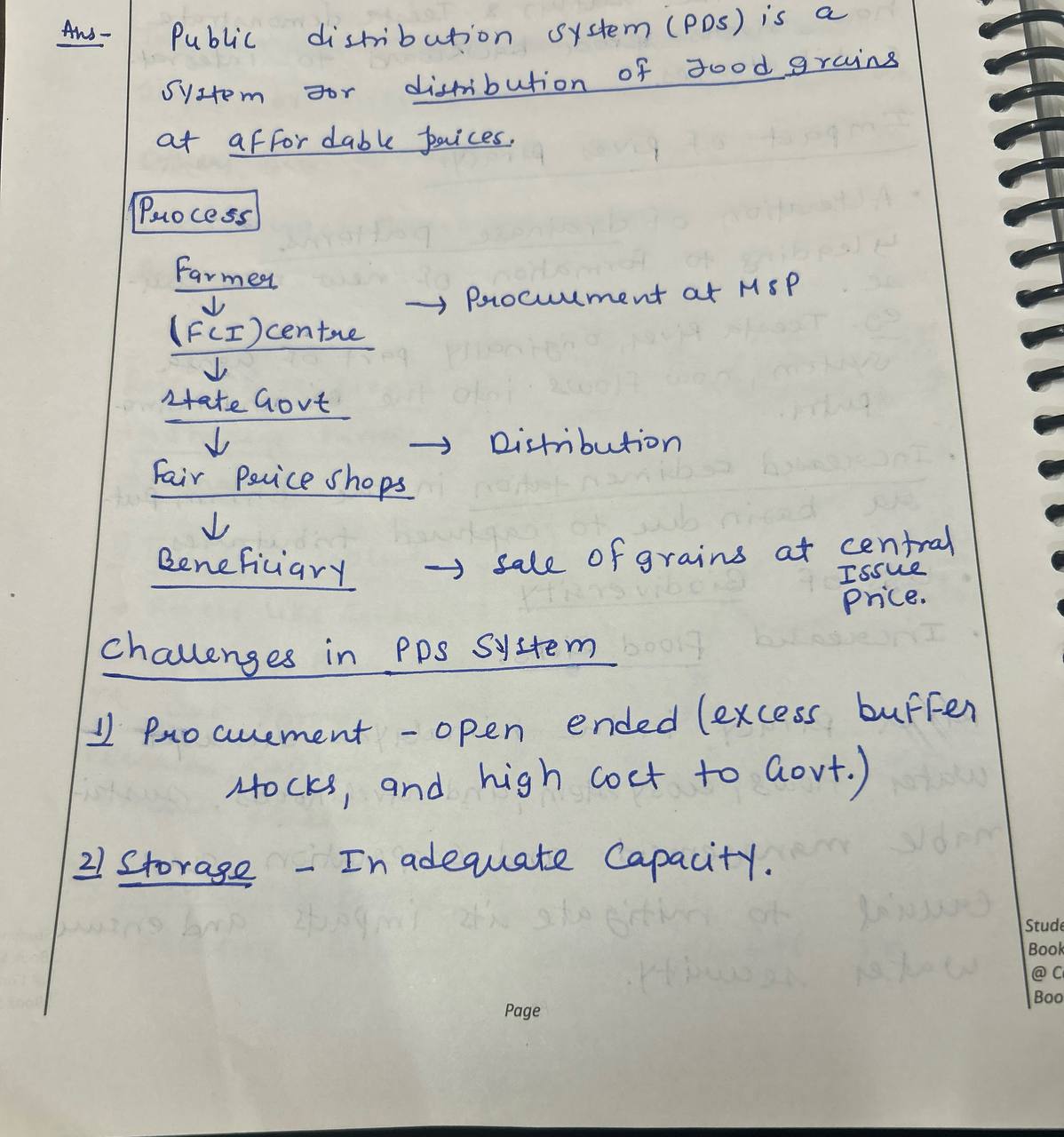Enumerate the causes of the latest locust attacks that have occurred in and around India, as well as the dangers that they bring. List the actions India has made to address this issue as well.
A wetland is a distinct ecosystem that is flooded by water, either permanently or seasonally, where oxygen-free processes prevail. The primary factor that distinguishes wetlands from other landforms or water bodies is the characteristic vegetation of aquatic plants. They are reservoirs of biodiversiRead more
A wetland is a distinct ecosystem that is flooded by water, either permanently or seasonally, where oxygen-free processes prevail. The primary factor that distinguishes wetlands from other landforms or water bodies is the characteristic vegetation of aquatic plants.
They are reservoirs of biodiversity and provide a range of ecosystem services, which benefit us, including
- Groundwater replenishment: Wetland systems are directly linked to groundwater and a crucial regulator of both the quantity and quality of water found below the ground.
- Water purification: Many wetland systems possess biofilters, hydrophytes, and organisms that in addition to nutrient up-take abilities have the capacity to remove toxic substances that have come from pesticides, industrial discharges, and mining activities.
- Flood control and shoreline stabilisation: Tidal and intertidal wetland systems protect and stabilize coastal zones. Coral reefs and mangroves provide a protective barrier to coastal shoreline. Wetlands help to lessen the impacts of flooding by absorbing water and reducing the speed at which flood water flows.
- Nutrient retention: Wetland vegetation uptake and store nutrients found in the surrounding soil and water.
- Aquaculture: Wetlands are used to harvest fish/aquatic animals for human consumption and pharmaceuticals.
- Wetland products: It includes important products such as rice, honey from mangroves, fuel wood, salt, animal fodder, traditional medicines (e.g. from mangrove bark), fibres for textiles, dyes and tannins etc.
- Climate change mitigation and adaptation: Wetlands perform mitigation effects through their ability to sink carbon, and adaptation effects through their ability to store and regulate water.
- Recreational, historical, scientific, and cultural values: Wetlands such as Pushkar lake in Rajasthan are of significant religious, historical or archaeological value to many cultures around the world. They are often popular for recreational activities including hiking, fishing, bird watching, photography and hunting.
Despite its numerous benefits, India has lost nearly one-third of its natural wetlands over the last four decades as per Wetlands International South Asia (WISA). The causes of wetland loss in India include:
- Urbanisation: Unplanned urban development and resource extraction has led to encroachment, transformation and draining of wetlands.
- Hydrologic activities: Construction of canals and diversion of streams and rivers to transport water to lower arid regions for irrigation has altered the drainage pattern and significantly degraded the wetlands of the region.
- Agricultural activities: Following the Green Revolution, vast stretches of wetlands have been converted to paddy fields. Also, high fertiliser use stimulates algal growth, leading to eutrophication of surface water bodies. Intensive aquaculture: Demand for shrimps and fishes has provided economic incentives to convert wetlands and mangrove forests for development of pisciculture and aquaculture ponds.
- Invasive species: Indian wetlands are threatened by exotic plant species introduced such as water hyacinth and Salvinia. They clog waterways and compete with native vegetation.
- Climate change: Increased air temperature; shifts in precipitation; increased frequency of storms, droughts, and floods; sea level rise could also affect wetlands.
Therefore, the government has brought the Wetlands (Conservation and Management) Rules, 2016 to preserve the ecological character of wetlands through the implementation of ecosystem approaches.
See less



India recently witnessed invasion of vast swathes of land by swarms of desert locusts, which entered India from the western side via Pakistan's Sindh province. The desert locusts usually breed in areas in the countries along the eastern coast of Africa in a region known as the Horn of Africa. The reRead more
India recently witnessed invasion of vast swathes of land by swarms of desert locusts, which entered India from the western side via Pakistan’s Sindh province. The desert locusts usually breed in areas in the countries along the eastern coast of Africa in a region known as the Horn of Africa.
The reasons for these locust attacks are
Threat posed by the locust attacks
Both are extremely toxic and a high level of exposure to the pesticides may cause nausea, dizziness and even death. In India, Locust Warning Organisation (LWO), under Ministry of Agriculture & Farmers Welfare, is responsible for monitoring, survey and control of Desert Locust in Scheduled Desert Areas mainly in the States of Rajasthan and Gujarat. The steps taken by India to tackle the threat of locust attack include:
As the recent locust attack has shown that India’s food security remains vulnerable to such events, India needs to deeply engage with other regional countries like Pakistan and Iran to effectively tackle such future locust attacks by taking mitigating steps in the breeding grounds of these locusts itself.
See less